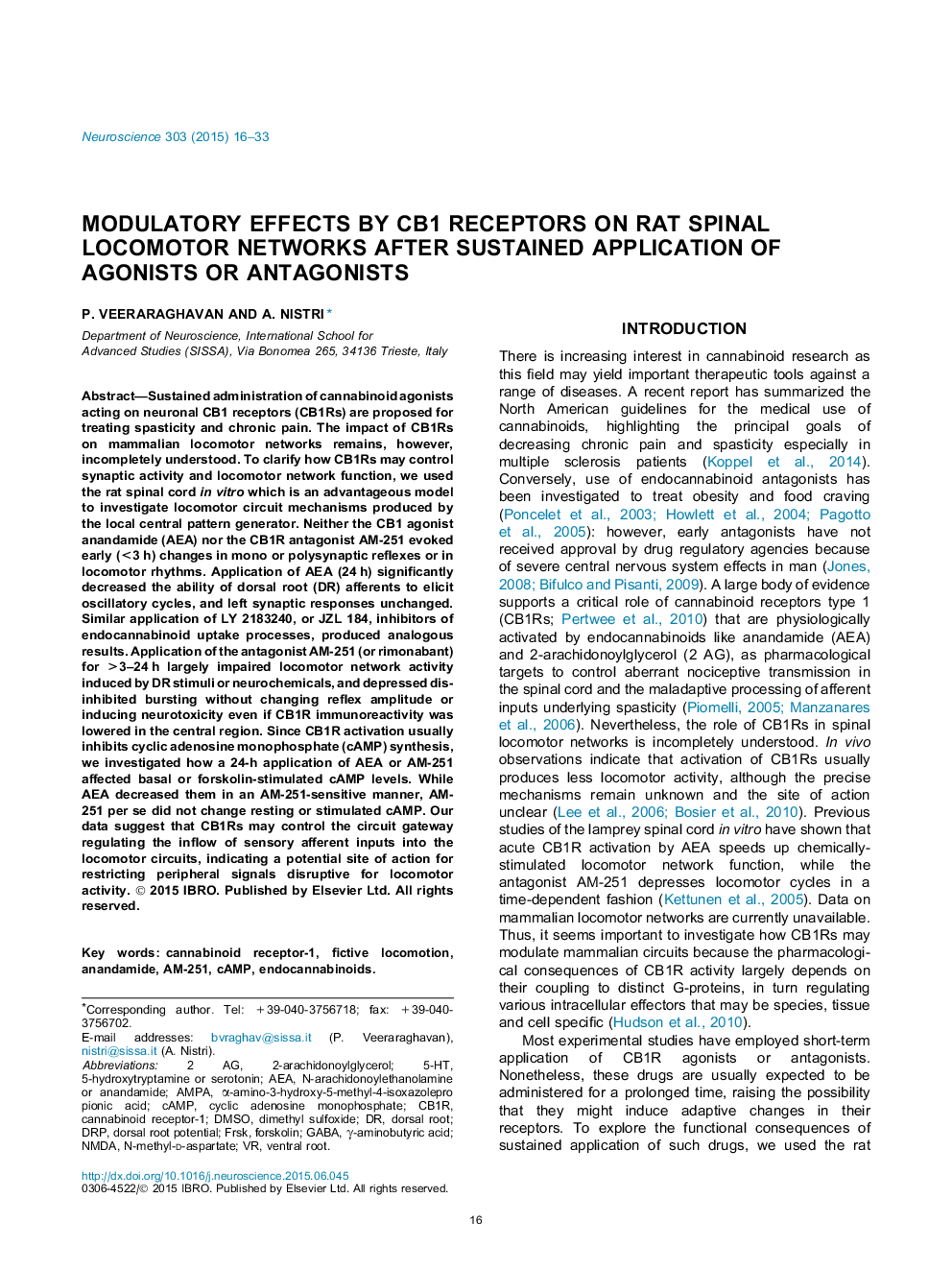| کد مقاله | کد نشریه | سال انتشار | مقاله انگلیسی | نسخه تمام متن |
|---|---|---|---|---|
| 6271796 | 1614773 | 2015 | 18 صفحه PDF | دانلود رایگان |
عنوان انگلیسی مقاله ISI
Modulatory effects by CB1 receptors on rat spinal locomotor networks after sustained application of agonists or antagonists
دانلود مقاله + سفارش ترجمه
دانلود مقاله ISI انگلیسی
رایگان برای ایرانیان
کلمات کلیدی
5-HTAEADRPAM-2512-arachidonoylglycerolforskolinCB1RAMPAN-methyl-d-aspartateNMDA5-hydroxytryptamine or serotonin - 5-hydroxytryptamine یا serotonincAMP - cAMPDMSO - DMSOCyclic adenosine monophosphate - آدنوزین مونوفسفات Cyclicanandamide - آناندامیدα-amino-3-hydroxy-5-methyl-4-isoxazolepropionic acid - اسید α-آمینو 3-هیدروکسی-5-متیل-4-ایزوکسول پپونیکγ-aminobutyric acid - اسید γ-آمینوبوتیریکendocannabinoids - اندوکانبایوئید هاfictive locomotion - حرکتی فکریDimethyl sulfoxide - دیمتیل سولفواکسیدVentral root - ریشه بطنیdorsal root - ریشه پشتیdorsal root potential - پتانسیل ریشه پشتیGABA - گاباcannabinoid receptor-1 - گیرنده کانابینوئید-1
موضوعات مرتبط
علوم زیستی و بیوفناوری
علم عصب شناسی
علوم اعصاب (عمومی)
پیش نمایش صفحه اول مقاله

چکیده انگلیسی
Sustained administration of cannabinoid agonists acting on neuronal CB1 receptors (CB1Rs) are proposed for treating spasticity and chronic pain. The impact of CB1Rs on mammalian locomotor networks remains, however, incompletely understood. To clarify how CB1Rs may control synaptic activity and locomotor network function, we used the rat spinal cord in vitro which is an advantageous model to investigate locomotor circuit mechanisms produced by the local central pattern generator. Neither the CB1 agonist anandamide (AEA) nor the CB1R antagonist AM-251 evoked early (<3Â h) changes in mono or polysynaptic reflexes or in locomotor rhythms. Application of AEA (24Â h) significantly decreased the ability of dorsal root (DR) afferents to elicit oscillatory cycles, and left synaptic responses unchanged. Similar application of LY 2183240, or JZL 184, inhibitors of endocannabinoid uptake processes, produced analogous results. Application of the antagonist AM-251 (or rimonabant) for >3-24Â h largely impaired locomotor network activity induced by DR stimuli or neurochemicals, and depressed disinhibited bursting without changing reflex amplitude or inducing neurotoxicity even if CB1R immunoreactivity was lowered in the central region. Since CB1R activation usually inhibits cyclic adenosine monophosphate (cAMP) synthesis, we investigated how a 24-h application of AEA or AM-251 affected basal or forskolin-stimulated cAMP levels. While AEA decreased them in an AM-251-sensitive manner, AM-251 per se did not change resting or stimulated cAMP. Our data suggest that CB1Rs may control the circuit gateway regulating the inflow of sensory afferent inputs into the locomotor circuits, indicating a potential site of action for restricting peripheral signals disruptive for locomotor activity.
ناشر
Database: Elsevier - ScienceDirect (ساینس دایرکت)
Journal: Neuroscience - Volume 303, 10 September 2015, Pages 16-33
Journal: Neuroscience - Volume 303, 10 September 2015, Pages 16-33
نویسندگان
P. Veeraraghavan, A. Nistri,